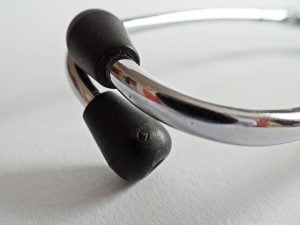A study of nearly 7,500 Americans age 65 or older suggests that elevated blood pressure is not related to high mortality risk among people in that age group with weak grip strength.

Elevated blood pressure is not related to high mortality risk among people in that age group with weak grip strength
The new researchs by Oregon State University findings suggest that treating high blood pressure in older patients should not follow a one-size-fits-all approach. When an older person is still functioning at a high level physically, high blood pressure indicates mortality risk; however, when the person is not physically robust, high blood pressure is not a marker for mortality risk.
 “If people are very frail, they typically don’t respond well to anti-hypertensive therapy and they are not benefiting from having a low blood pressure,†said lead author Chenkai Wu, a graduate student in OSU’s College of Public Health and Human Sciences. “The research is basically saying older adults are not one single group, they’re very different in terms of their health status, and drugs may not have the same benefits for everyone. This is consistent with the idea of precision medicine, where you don’t just look at age, you look at other things like functional status.â€
“If people are very frail, they typically don’t respond well to anti-hypertensive therapy and they are not benefiting from having a low blood pressure,†said lead author Chenkai Wu, a graduate student in OSU’s College of Public Health and Human Sciences. “The research is basically saying older adults are not one single group, they’re very different in terms of their health status, and drugs may not have the same benefits for everyone. This is consistent with the idea of precision medicine, where you don’t just look at age, you look at other things like functional status.â€
Most people’s diastolic blood pressure goes down with age
Systolic blood pressure, though, tends to rise, and high blood pressure – hypertension – can put extra strain on the heart and arteries, causing greater risk of heart attack and stroke.
But as Wu’s research suggests, an elderly patient’s level of physical functionality should be considered in determining whether anti-hypertensive therapy is warranted.
Grip strength, easily measured by an inexpensive device known as a dynamometer, is a common way to gauge functionality in the elderly.
Elevated systolic blood pressure and diastolic blood pressure are correlated
Wu looked at data from 7,492 people age 65 or older who had taken part in the nationally representative Health and Retirement Study. Six years after being surveyed, 25 percent of those people had died.
The study showed that elevated systolic blood pressure and diastolic blood pressure correlated with a substantially higher likelihood of dying for those with normal grip strength, which is 26 kilograms or more for men and 16 kilograms or more for women.
 “We did three analyses,†Wu said. “One was to look at gait speed to separate people into two groups, normal and slow. The second part was grip strength – weak grip and normal grip. Third, we looked at the combinations, and the strongest inverse association between high blood pressure and mortality was for slow walkers with weak grip strength.â€
“We did three analyses,†Wu said. “One was to look at gait speed to separate people into two groups, normal and slow. The second part was grip strength – weak grip and normal grip. Third, we looked at the combinations, and the strongest inverse association between high blood pressure and mortality was for slow walkers with weak grip strength.â€
“Both measures are markers of functional status, a multidimensional concept. Considering both might be better than considering each measure alone for identifying subgroups of elders for whom high blood pressure is potentially beneficial.â€
An inverse association between high blood pressure and mortality
In addition to the connection with weak grip strength, Wu said there was a “very clear†inverse association between high blood pressure and mortality among those who weren’t physically able to finish the gait-speed test in the latest study, measured over a 98.5-inch walk: among those who couldn’t walk a little over 8 feet, high blood pressure was associated with less mortality risk.
“It’s a small group but not negligible – 6 percent – of people who were not able to complete the test,†he said. “Compared to grip strength, it’s a harder test to complete, an integration of a lot of physiological systems: balance, vision, lower-extremity muscle strength, etc.â€
Published by the Editorial Staff on
